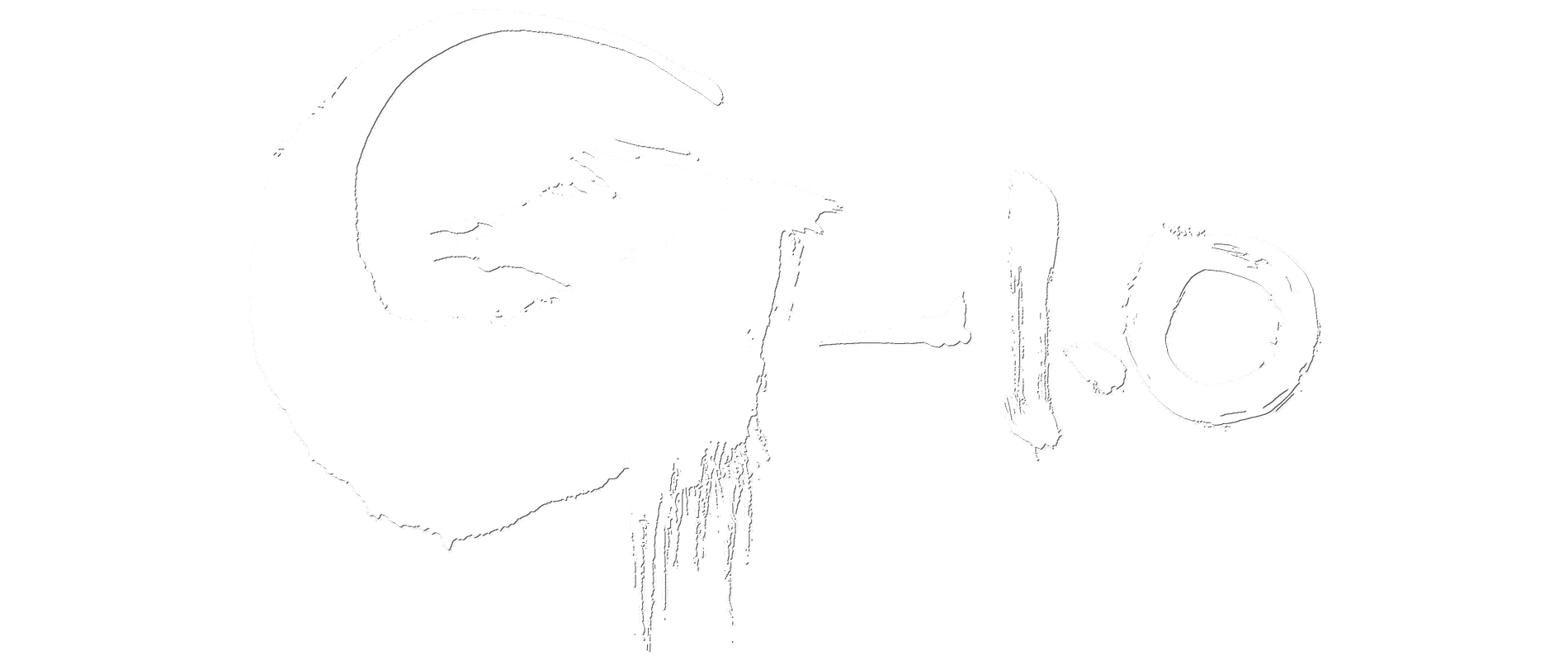In postwar Japan, Godzilla brings new devastation to an already scorched landscape. With no military intervention or government help in sight, the survivors must join together in the face of despair and fight back against an unrelenting horror. A film by Takashi Yamazaki, starring Ryunosuke Kamiki, Munetaka Aoki, Sakura Ando, Minami Hamabe, Kuranosuke Sasaki, Hidetaka Yoshioka, and Yuki Yamada.
ゴジラ-1.0
GODZILLA MINUS ONE
山崎貴
Takashi Yamazaki
(2023)

During the final days of World War II in 1945, kamikaze pilot Lieutenant Koichi Shikishima / 敷島浩一 (Ryunosuke Kamiki) lands his Mitsubishi A6M “Zero” at the Japanese airfield on Odo Island (大島飛行場) due to mechanical malfunctions. Lead mechanic Sosaku Tachibana / 橘宗作 (Munetaka Aoki) receives the preliminary report from his crews that they found nothing wrong with the engine. However, when he confronts Shikishima with his findings, Shikishima becomes frustrated and quickly walks away.
The Mitsubishi A6M “Zero” is a long-range carrier-based fighter aircraft formerly manufactured by Mitsubishi Aircraft Company, a part of Mitsubishi Heavy Industries. It was operated by the Imperial Japanese Navy (IJN) from 1940 to 1945. The A6M was designated as the Mitsubishi Navy Type 0 carrier fighter (零式艦上戦闘機).
Kamikaze (神風 / Divine Wind) were a part of the Japanese Special Attack Units of military aviators who flew suicide attacks for the Empire of Japan against Allied naval vessels in the closing stages of the Pacific campaign of World War II, intending to destroy warships more effectively than with conventional air attacks. About 3,800 kamikaze pilots died during the war, and more than 7,000 naval personnel were killed by kamikaze attacks.
The Zero was named for the year 2600 in the Japanese calendar, which corresponded to 1940 AD when the plane entered full production. This is why it was officially designated the “Type 0 Carrier Fighter” (Zero-Sen). The Zero was the first Japanese aircraft to see combat in World War II, being deployed to China in 1940 where it quickly established air superiority, shooting down 15 Chinese fighters without a single loss in its first engagement. The Zero was the most produced Japanese aircraft of WWII, with over 10,900 built during the war. Towards the end of the war, the Zero was adapted for use in kamikaze attacks, becoming one of the most popular planes for these suicide missions.

That night, a gigantic prehistoric dinosaur-like creature appears and begins attacking the garrison. Everyone stares in shock at this monstrous creature they’ve never encountered before, unsure how to react. A crew member yells “Godzilla!”, explaining that’s the name the local islanders give it.
Tachibana barks orders for everyone to take cover. He hatches a desperate plan for Shikishima to sneak into his aircraft and use the 20mm gun to take down Godzilla. Shikishima successfully enters the cockpit, but fear paralyzes him, causing him to miss his chance to fire.
Godzilla, noticing the crew huddled in the trench, inches closer. Panic erupts as the crew opens fire on the creature with their meager weapons, only enraging Godzilla. It advances, slaughtering them one by one.
Shikishima scrambles out of the aircraft just before Godzilla chomps down on it, sending it flying. The crash and explosion knock Shikishima unconscious.
When he awakens the next day, he finds himself the sole survivor alongside Tachibana. Tachibana holds Shikishima accountable for the deaths of his crew.

On the ship back to the mainland, Tachibana approaches Shikishima and gives him an envelope filled with his crew’s family photos. This grim reminder serves as a constant accusation of Shikishima’s failure to act.
Shikishima returns to his home in Tokyo in December 1945, only to discover that his home had been destroyed by the air raids, along with his entire neighborhood.
He encounters his neighbor Sumiko Ota / 太田澄 (Sakura Ando), who is shocked to see him alive. But the realization of his survival dawns on her, and she lashes out. She calls him a disgrace, blaming him for not sacrificing himself to protect the country. She blames him for the destruction of Tokyo and the loss of her children. Sumiko reveals that Shikishima’s parents were also killed in the air raids.
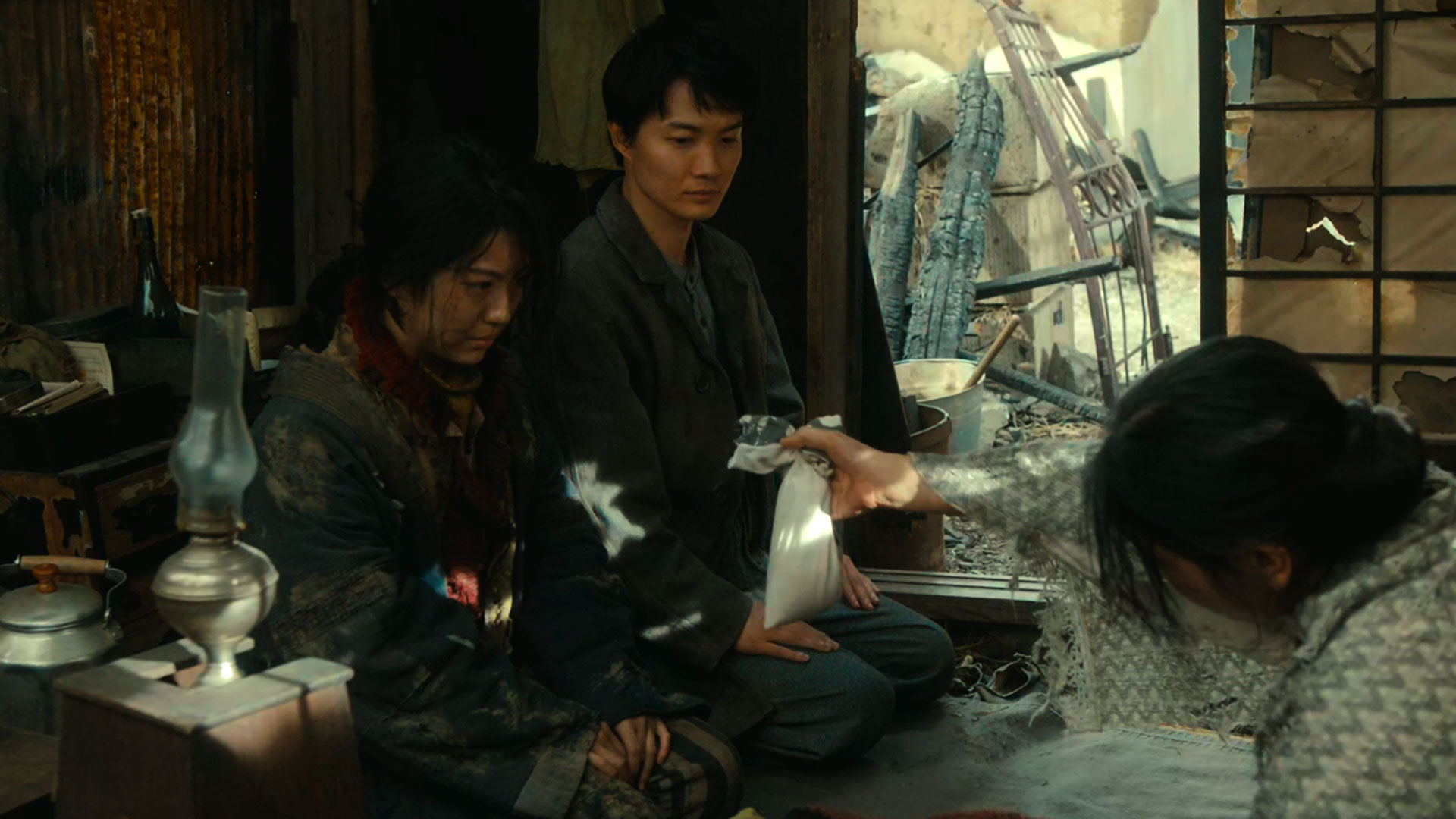
The next day, Shikishima encounters a young woman running away from someone in the market. He blocks her path, and she shoves a baby into his arms before disappearing into the crowd.
Unable to abandon the baby, Shikishima sits and waits in the market, hoping the young woman will return. Finally, he decides to take the baby home.
Suddenly, the woman appears from hiding and thanks him for watching the baby. Believing Shikishima is a good man because he didn’t abandon the child, the young woman follows him home.
She introduces herself as Noriko Oishi / 大石典子 (Minami Hamabe) and the baby as Akiko / アキコ. Noriko reveals she’s not the baby’s mother; Akiko’s parents were killed in the air raids.
Plagued by survivor’s guilt, Shikishima allows Noriko and the baby to stay at his home. When Sumiko learns about Noriko and the baby, she steps in and helps them care for Akiko.
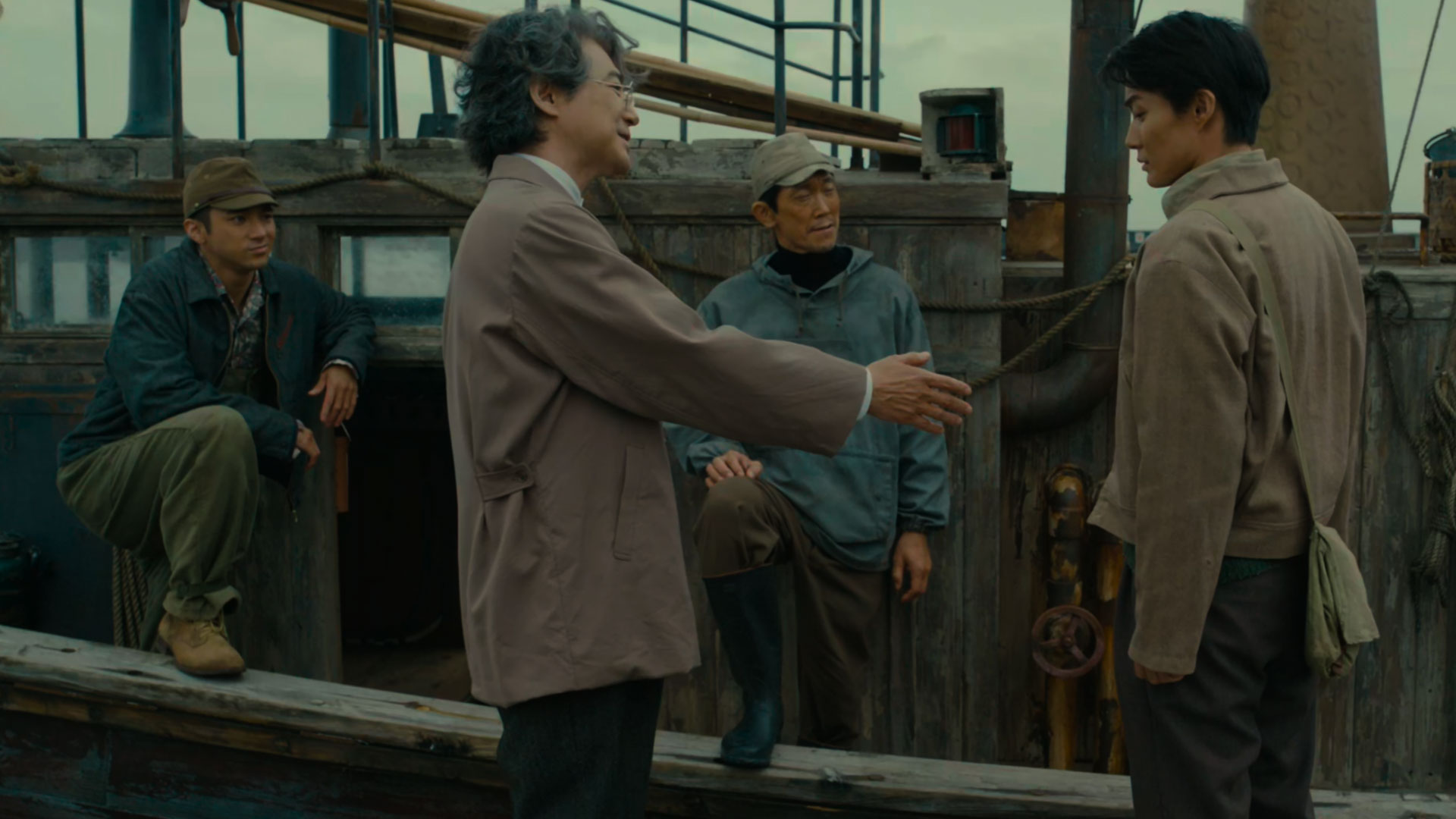
In March 1964, Shikishima lands a job tasked with disposing of 60,000 mines laid by the US and imperial navies off Japan’s coasts. He joins Captain Yoji Akitsu / 秋津淸治 (Kuranosuke Sasaki) and his crew on Shinsei Maru (新生丸), a small minesweeper.
The crew consists of Kenji Noda / 野田健治 (Hidetaka Yoshioka), a former naval weapons engineer, and a young man named Shiro Mizushima / 水島四郎 (Yuki Yamada).
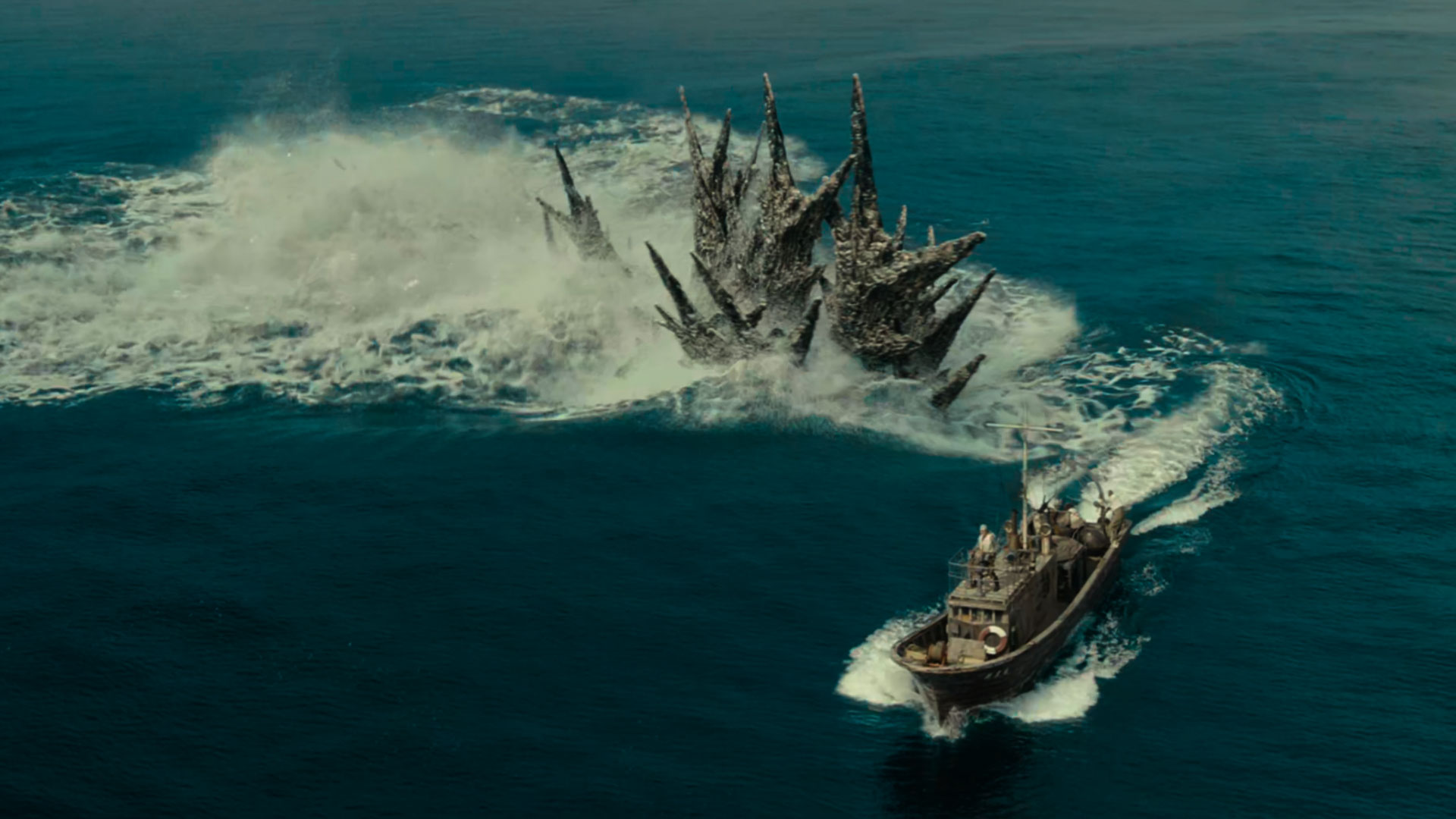
Meanwhile, Godzilla is mutated and exponentially empowered by the United States’ Operation Crossroads, a pair of nuclear weapon tests conducted by the United States at Bikini Atoll in July 1946. Godzilla sinks USS Redfish and destroys several other ships en route to Japan. In May 1947, Shinsei Maru is assigned to a location near the Ogasawara Islands.

Upon arriving at the wreckage of a ship, Shikishima realizes that it was destroyed by Godzilla. Noda concludes that the government actually tasked him/them with stalling Godzilla until the heavy cruiser Takao arrives. However, Takao fails to kill Godzilla; instead, the cruiser is demolished by Godzilla’s heat ray.
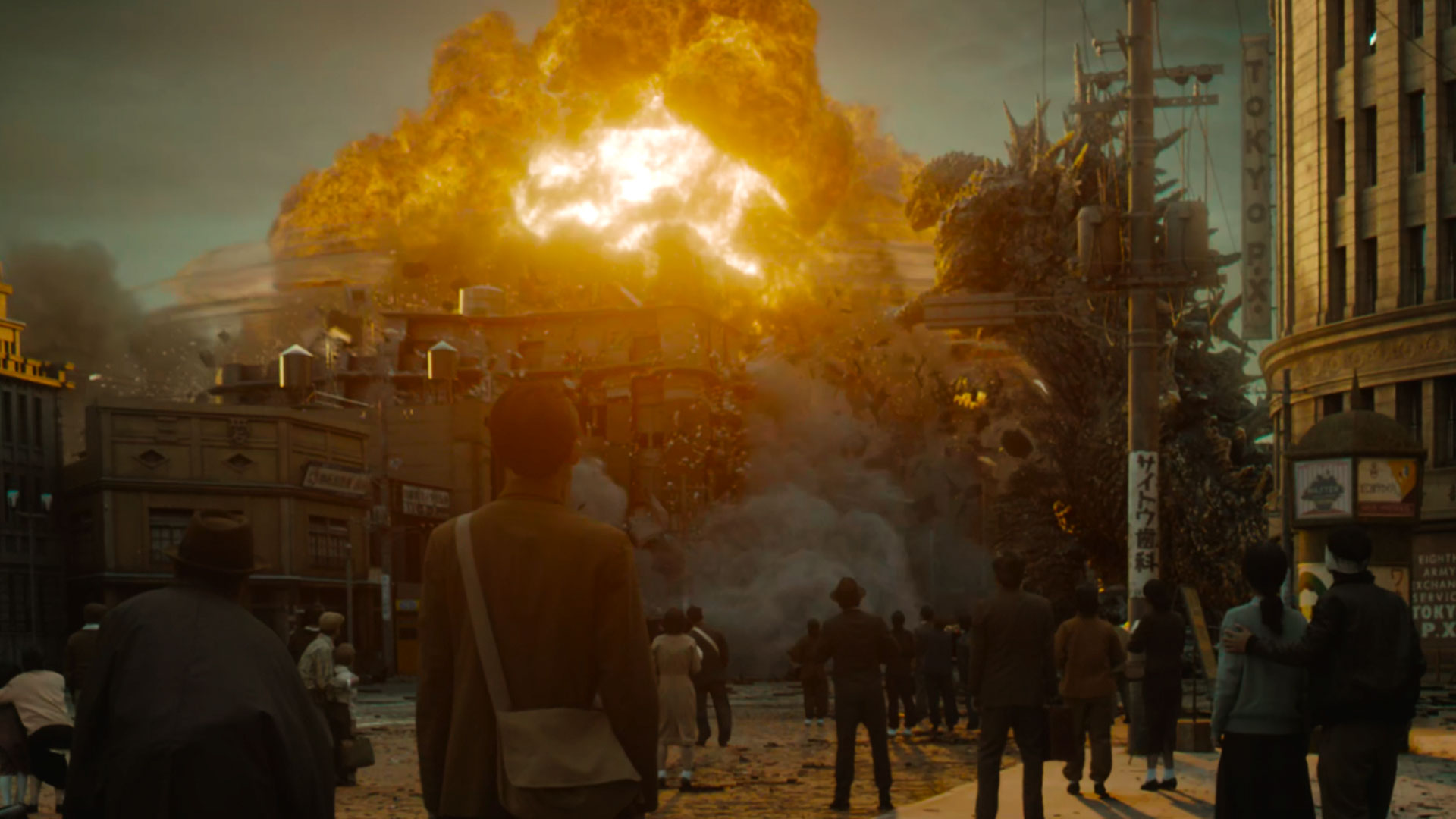
Written, directed, and VFX by Takashi Yamazaki, ゴジラ-1.0 / GODZILLA MINUS ONE takes a more human-centric approach, weaving a compelling narrative of war trauma and survivor’s guilt against the backdrop of a world still reeling from the devastation of World War II.
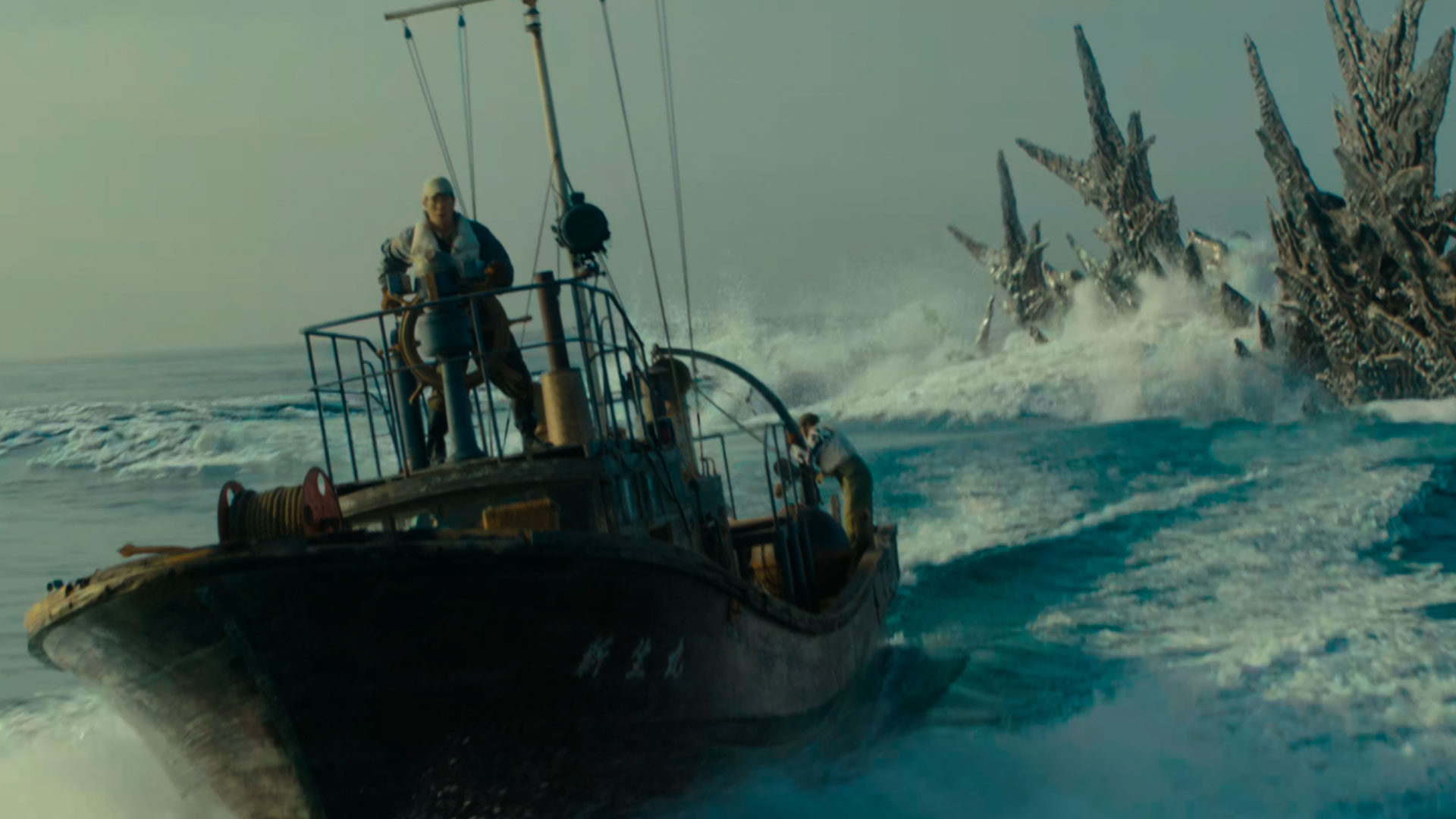
The true brilliance of Godzilla Minus One lies in its visual effects. The filmmaker understands that sometimes, less is more. The film doesn’t rely on showing Godzilla in his entirety all the time. Instead, the filmmaker masterfully uses glimpses and partial reveals to heighten the terror. The camera pans across a vast ocean, the waves surging ominously. Then, a dorsal fin slices through the water’s surface, immense and menacing. This approach leaves so much to the imagination, amplifying the sheer scale and power of Godzilla.
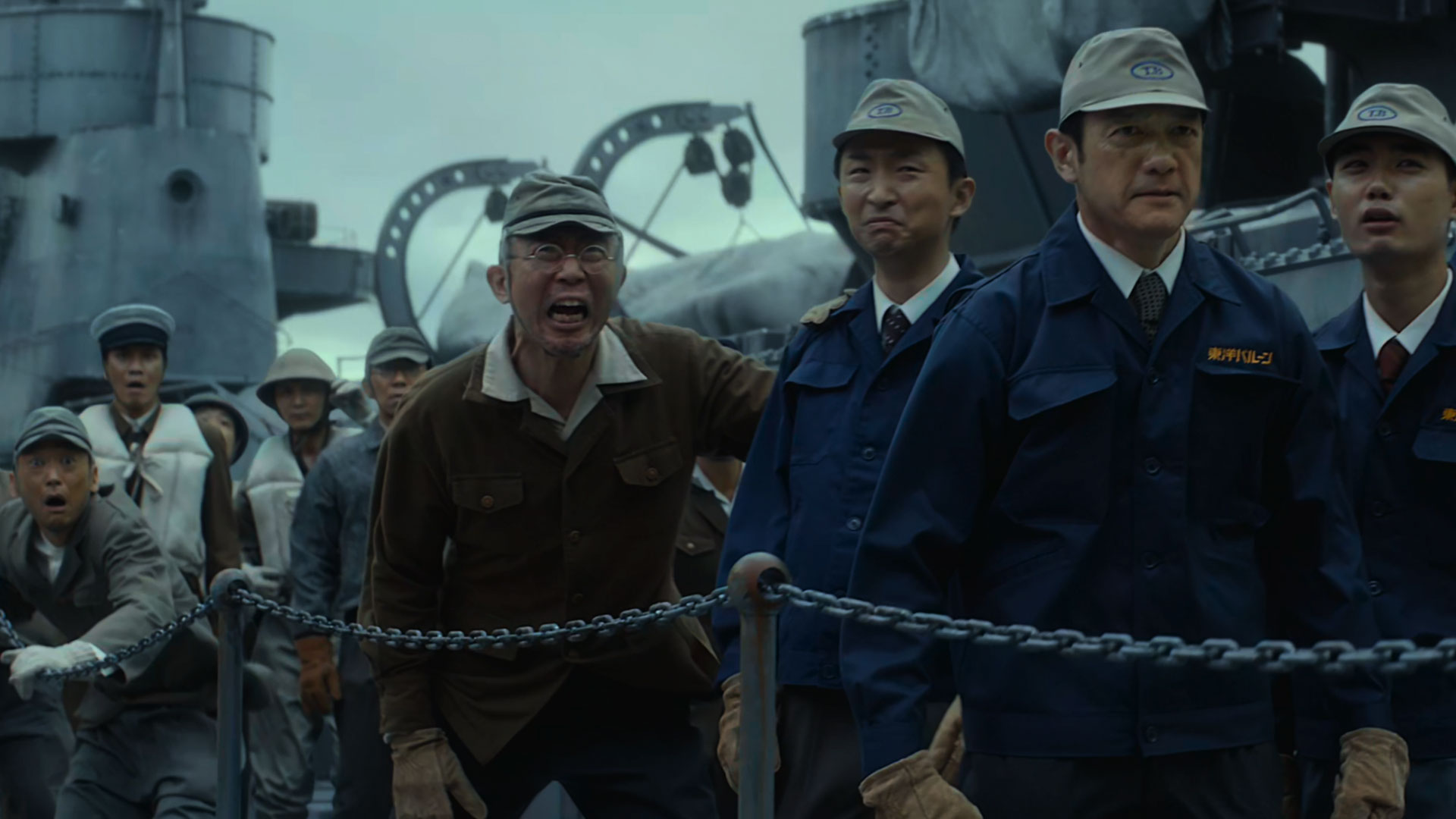
However, the film isn’t solely focused on spectacle. The human drama unfolds alongside the monstrous spectacle, offering a unique perspective on the aftermath of war and the psychological toll of facing unimaginable destruction. The characters’ struggles feel genuine, adding emotional weight to the larger narrative.

ゴジラ-1.0 / GODZILLA MINUS ONE is a film that delivers on both fronts. The compelling narrative and the masterful use of visual effects, particularly in its portrayal of Godzilla’s terrifying majesty.

ゴジラ-1.0 / GODZILLA MINUS ONE premiered at Toho Cinemas’ theater in Shinjuku, on 18 October 2023. The film was theatrically released in Japan on 3 November, the same date as the first Godzilla film’s theatrical release in 1954.

The Black and White version titled ゴジラ-1.0/C was theatrically released in Japan on 12 January 2024.
The Black and White version of GODZILLA MINUS ONE holds significance as it offers a more gritty and realistic view of Godzilla, enhancing the terror and impact of the legendary monster’s rampage through Tokyo. Director Takashi Yamazaki aimed to create a scarier and more immersive experience by remastering the film in black and white. This not only evokes a different emotional response but also enhances the sense of reality, making audiences feel as if Godzilla truly exists. This version, by removing color and focusing on specific visual elements through manual adjustments, intensifies the horror and drama, providing viewers with a fresh perspective on the iconic monster’s destructive power.

